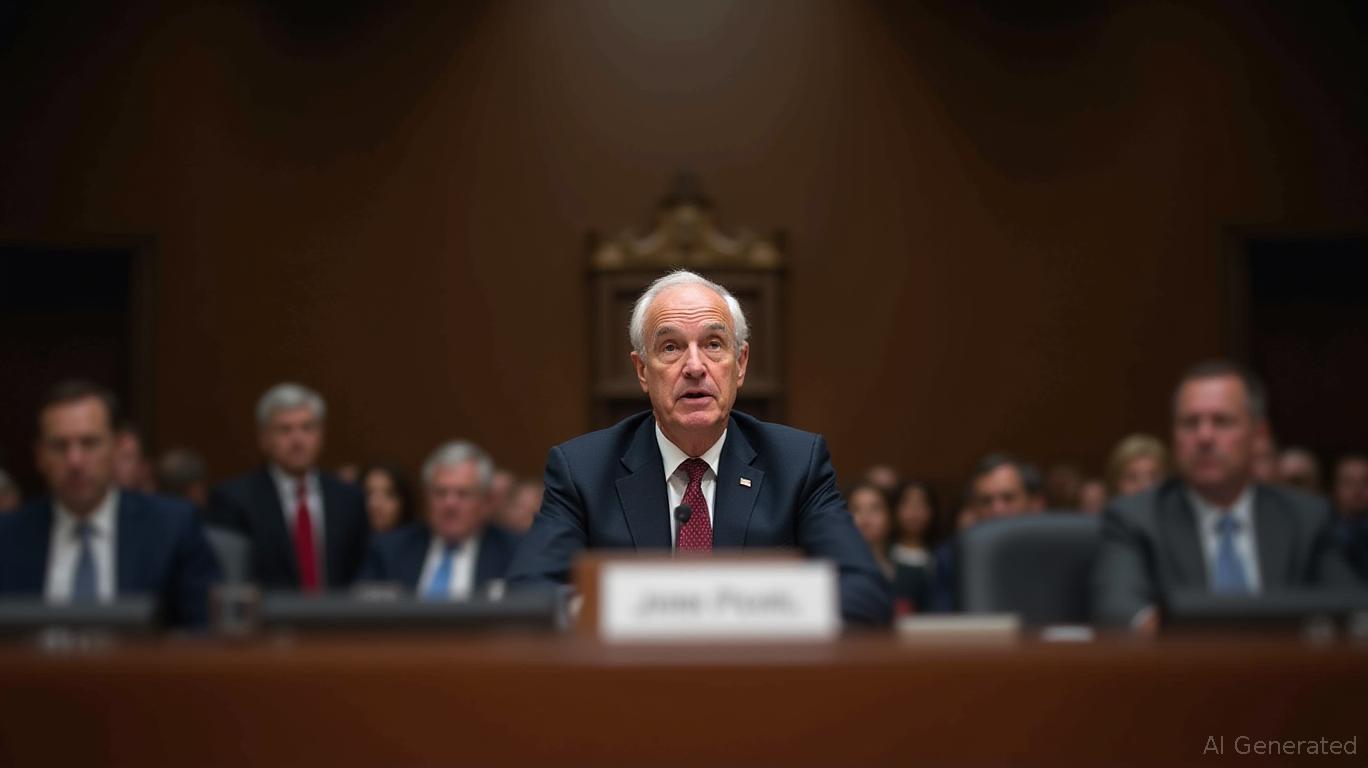Strategy’s new credit rating will open Bitcoin to $130 trillion institutional capital
A quiet but historic moment has unfolded, which may reshape how traditional markets value digital assets like Bitcoin.
For the first time, a major global rating agency has evaluated a company whose borrowing model is directly tied to BTC.
On Oct. 27, S&P Global Ratings assigned Strategy Inc. (MSTR) a “B-” rating with a Stable outlook.
Speaking on this, Mathew Sigel, the head of digital asset research at VanEck, said:
“That’s high-yield territory. Able to service debt for now, but vulnerable to shocks. “
Nonetheless, the rating marks a recognition of the firm’s debt structure and the role of Bitcoin as legitimate collateral within the global credit system.
In doing so, S&P placed Bitcoin on the same analytical map as corporate debt, sovereign bonds, and commodities-backed loans. This transforms what was once a theoretical concept into a rated financial reality.
Risk or Opportunity?
Meanwhile, S&P’s methodology views Bitcoin primarily as a source of volatility rather than capital.
The firm cited Strategy’s “heavy reliance on Bitcoin”, “thin capitalization,” and “fragile dollar liquidity” as reasons for the speculative-grade classification.
However, crypto analysts disagree with that interpretation, arguing that the model misjudges Bitcoin’s liquidity and structural resilience.
Unlike traditional corporate reserves, BTC can be converted instantly, across jurisdictions, and without banking intermediaries.
Jeff Park, chief investment officer at ProCap BTC, argued that S&P’s model undervalues Bitcoin’s liquidity and independence from the banking system.
According to him:
“Treating Bitcoin as NEGATIVE capital ignores its incredible liquidity, independence from the rest of the financial system, and all of its hedging properties.”
Park furthered that accounting and tax frameworks are already catching up to this reality. The Financial Accounting Standards Board’s ASC 820 rule now allows companies to mark Bitcoin at fair value.
At the same time, US Treasury CAMT guidance enables firms to exclude unrealized gains or losses from minimum-tax calculations.
He noted:
“RAC is the last loner of the the three governing bodies standing illogically orphaned.”
How does the rating impact Bitcoin?
Credit ratings are the gatekeepers of global finance. They determine how $130 trillion in fixed-income capital, spanning pension funds, insurers, and sovereign wealth portfolios, allocates risk.
So, a single-letter upgrade or downgrade can redirect billions in capital flows overnight.
Until this month, Bitcoin had no place in that ecosystem. Most regulated investors are prohibited from holding unclassified assets, leaving BTC exposure largely to equities or ETFs.
However, S&P’s evaluation of Michael Saylor’s Bitcoin-centric firm changes that framework.
This reclassification opens a narrow but significant channel for this class of investors.
Institutional investors constrained by mandate can now gain indirect Bitcoin exposure through the rated debt of a Bitcoin-backed issuer.
While these funds may never hold BTC directly, they can hold bonds tied to it, thereby providing an entry point that embeds Bitcoin into the architecture of global credit.
So, if only 1% of the world’s bond market were to rotate toward Bitcoin-linked instruments, that would translate to roughly $1.3 trillion in potential inflows. Notably, this is more than twice Ethereum’s market capitalization and larger than Mexico’s GDP.
Moreover, the implications extend beyond Strategy’s borrowing costs.
The rating represents BTC’s first credential within the credit hierarchy, signaling the asset’s entry into the structured finance core.
As a result, three systemic effects follow:
- First, Bitcoin climbs the collateral ladder, joining gold and investment-grade bonds as acceptable security for loans and structured products.
- Second, institutional eligibility widens—pension funds and credit vehicles can justify exposure to BTC-backed instruments under existing regulatory mandates.
- Third, regulatory integration accelerates as rating methodologies inform Basel-aligned risk-weight frameworks, allowing Bitcoin exposure to be quantified rather than disqualified.
Together, these dynamics shift Bitcoin’s behavior. Instead of trading solely on speculative momentum, it begins attracting duration-based capital, which is yield-seeking money that stabilizes sovereign debt markets.
In that sense, S&P’s ‘B-’ designation is less about Strategy’s solvency than Bitcoin’s functional recognition as collateral. It marks the point where volatility starts to be expressed through yield spreads rather than sentiment.
As more rated issuers appear, BTC will build a credit history that agencies can model and investors can price.
Over time, the world’s first “Bitcoin yield curve” could emerge, allowing the asset to trade as digital gold and as a measurable, rated component of the global credit system.
The post Strategy’s new credit rating will open Bitcoin to $130 trillion institutional capital appeared first on CryptoSlate.
Disclaimer: The content of this article solely reflects the author's opinion and does not represent the platform in any capacity. This article is not intended to serve as a reference for making investment decisions.
You may also like
Bitcoin News Update: Positive Sentiment Drives November Crypto Surge with MoonBull and CRO Rising Thanks to Staking and New Partnerships
- November 2025 crypto optimism centers on MoonBull ($MOBU), whose $450K+ presale offers 95% APY staking and 9,256% ROI projections. - Cronos (CRO) surges 10% after Trump Media partnership announcement, marking its third major boost this year via treasury agreements and ETF developments. - Bitcoin (BTC) nears $116K amid easing U.S.-China tensions and MicroStrategy's $43M BTC purchase, though consolidation persists ahead of Fed policy decisions. - Ethereum (ETH) leads DeFi innovation while crypto ETPs see $

Rate Reduction Expected, Yet Powell's Conference May Hinder Further Easing
- The U.S. Federal Reserve plans a 25-basis-point rate cut to 3.75-4.00%, driven by weak labor data and delayed economic reports from the government shutdown. - Markets expect the cut (98.3% probability) but watch for "hawkish surprises" in Powell's presser about future easing pace and inflation risks. - Global markets react: BoE faces 68% December cut odds, while ECB and BOJ decisions could reshape cross-asset flows this week. - Uncertainty lingers over QT timeline and Powell's rhetoric, which could sway

Crypto and Construction Converge: Kengo Kuma’s Georgia Development Draws International Investment
- Georgia's Kengo Kuma-designed Black Sea coastal project attracts crypto investors seeking real estate diversification amid 2025 market shifts. - Tax exemptions and investor-friendly policies drive crypto-backed interest in Georgia's luxury sustainable developments, mirroring global digital asset-to-property trends. - U.S. real estate firms like Alexandria and Galaxy Digital highlight crypto-real estate linkages, with Georgia's project symbolizing converging traditional and digital economies. - Environmen

AI-driven Demand Fuels Significant Growth in Bloom Energy's Profits
- Bloom Energy's shares surged 18% after Q3 earnings and revenue far exceeded Wall Street forecasts, driven by AI data center demand. - The company reported 57% YoY revenue growth, with installation revenue doubling as AI infrastructure strains traditional grid capacity. - A $5B Brookfield investment and strategic pivot to AI infrastructure accelerated growth, with plans to double manufacturing capacity by 2026. - Despite a $23M net loss, Bloom's cash reserves rose to $595M, and analysts raised price targe

